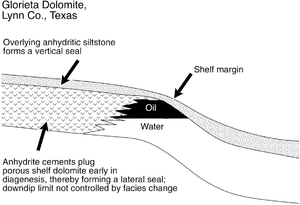Difference between revisions of "Diagenetic impact on traps"
Cwhitehurst (talk | contribs) |
Cwhitehurst (talk | contribs) m (added Category:Treatise Handbook 3 using HotCat) |
||
| (15 intermediate revisions by 2 users not shown) | |||
| Line 6: | Line 6: | ||
| part = Predicting the occurrence of oil and gas traps | | part = Predicting the occurrence of oil and gas traps | ||
| chapter = Exploring for stratigraphic traps | | chapter = Exploring for stratigraphic traps | ||
| − | | frompg = 21- | + | | frompg = 21-10 |
| − | | topg = 21- | + | | topg = 21-10 |
| author = John C. Dolson, Mike S. Bahorich, Rick C. Tobin, Edward A. Beaumont, Louis J. Terlikoski, Michael L. Hendricks | | author = John C. Dolson, Mike S. Bahorich, Rick C. Tobin, Edward A. Beaumont, Louis J. Terlikoski, Michael L. Hendricks | ||
| link = http://archives.datapages.com/data/specpubs/beaumont/ch21/ch21.htm | | link = http://archives.datapages.com/data/specpubs/beaumont/ch21/ch21.htm | ||
| Line 15: | Line 15: | ||
}} | }} | ||
| − | [[ | + | [[Stratigraphic trap]] geometries can be mapped and defined at any geologic scale from an interpretation of [[facies]] in [[Seismic data|seismic]] or well data (see [[Basic open hole tools]] and [[Basic cased hole tools]]), but diagenetic overprints often modify primary [[Trap|trapping geometries]]. Diagenetic changes often can be predicted and mapped reliably, especially if they follow facies or paleostructure. However, if [[diagenesis]] does not follow facies or paleostructure, then the exploration and exploitation risk increases because predicting the trap location is more difficult. |
| − | + | [[file:exploring-for-stratigraphic-traps_fig21-5.png|left|300px|thumb|{{figure number|1}}From unpublished data by R.C. Tobin, 1987.]] | |
==Example== | ==Example== | ||
| − | Access to core, samples, and modern wireline log suites greatly facilitates subsurface interpretation. In [[:file:exploring-for-stratigraphic-traps_fig21-5.png|Figure 1]], both lateral and top seals in the dolomite reservoir were created by anhydrite cementation during early diagenesis. Primary facies changes do not control the location of the trap. | + | Access to [[Overview of routine core analysis|cores]], [[Mudlogging: drill cuttings analysis|samples]], and modern wireline log suites greatly facilitates subsurface interpretation. In [[:file:exploring-for-stratigraphic-traps_fig21-5.png|Figure 1]], both [[lateral]] and top seals in the [[Carbonate|dolomite]] reservoir were created by [[anhydrite]] cementation during early diagenesis. Primary facies changes do not control the location of the trap. |
==See also== | ==See also== | ||
* [[Stratigraphic trap]]s | * [[Stratigraphic trap]]s | ||
| − | * [[ | + | * [[Stratigraphic trap seals]] |
| − | + | * [[Scale importance]] | |
| − | * [[ | + | {{clear}} |
==External links== | ==External links== | ||
| Line 36: | Line 36: | ||
[[Category:Predicting the occurrence of oil and gas traps]] | [[Category:Predicting the occurrence of oil and gas traps]] | ||
[[Category:Exploring for stratigraphic traps]] | [[Category:Exploring for stratigraphic traps]] | ||
| + | [[Category:Treatise Handbook 3]] | ||
Latest revision as of 21:06, 3 February 2022
| Exploring for Oil and Gas Traps | |

| |
| Series | Treatise in Petroleum Geology |
|---|---|
| Part | Predicting the occurrence of oil and gas traps |
| Chapter | Exploring for stratigraphic traps |
| Author | John C. Dolson, Mike S. Bahorich, Rick C. Tobin, Edward A. Beaumont, Louis J. Terlikoski, Michael L. Hendricks |
| Link | Web page |
| Store | AAPG Store |
Stratigraphic trap geometries can be mapped and defined at any geologic scale from an interpretation of facies in seismic or well data (see Basic open hole tools and Basic cased hole tools), but diagenetic overprints often modify primary trapping geometries. Diagenetic changes often can be predicted and mapped reliably, especially if they follow facies or paleostructure. However, if diagenesis does not follow facies or paleostructure, then the exploration and exploitation risk increases because predicting the trap location is more difficult.
Example
Access to cores, samples, and modern wireline log suites greatly facilitates subsurface interpretation. In Figure 1, both lateral and top seals in the dolomite reservoir were created by anhydrite cementation during early diagenesis. Primary facies changes do not control the location of the trap.
